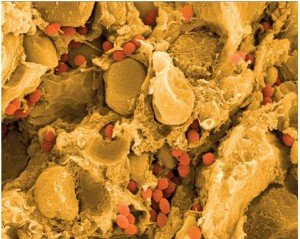New research has found that the incidence of a tissue damaging bacterial infection – necrotising fascitits – is rising in New Zealand. National media have been quick to report on the increases in cases of ‘flesh-eating’ bacteria.
 The research, published in the Journal of Infection, shows that necrotising fascitits has risen from fewer than 10 cases a year in 1990 to more than 70 cases a year in 2006.
The research, published in the Journal of Infection, shows that necrotising fascitits has risen from fewer than 10 cases a year in 1990 to more than 70 cases a year in 2006.
Necrotising fasciitis is a severe bacterial infection commonly caused by Group A Streptococcus (GAS). It results in the rapid destruction of soft tissue, with most severely affected people requiring extensive surgery and sometimes amputation of limbs to prevent infection spread.
Although the authors of the research cannot say exactly why cases of condition are increasing, they suggest that greater virulence of the infecting bacteria, decreased resistance due to other chronic illnesses and other environmental factors could all play a role.
You can read a full press release from the University of Otago, Wellington, here.
The authors have told the Science Media Centre they are reviewing some of the data to identify potential risk factors, such as use of anti inflammatory drugs, and immune suppressive diseases.
The research on ‘flesh-eating bacteria’ has received much media attention throughout New Zealand. The media appeal of such a descriptive title was not lost on the authors themselves, who noted in their article that the term had been “sensationalised” by the press for over a decade.
Media coverage:
TV3 News: Flesh-eating disease on the rise – study
The Dominion Post: Man tells of battle with flesh-eating bug
Otago Daily Times: Flesh-eating disease on the rise
Radio New Zealand: Surge in cases of flesh-eating disease, study shows
Stuff.co.nz: Flesh eating disease on the rise
NewsTalk ZB: Flesh eating disease on rise
New Zealand Herald: Lethal ‘flesh-eating’ bug numbers on rise